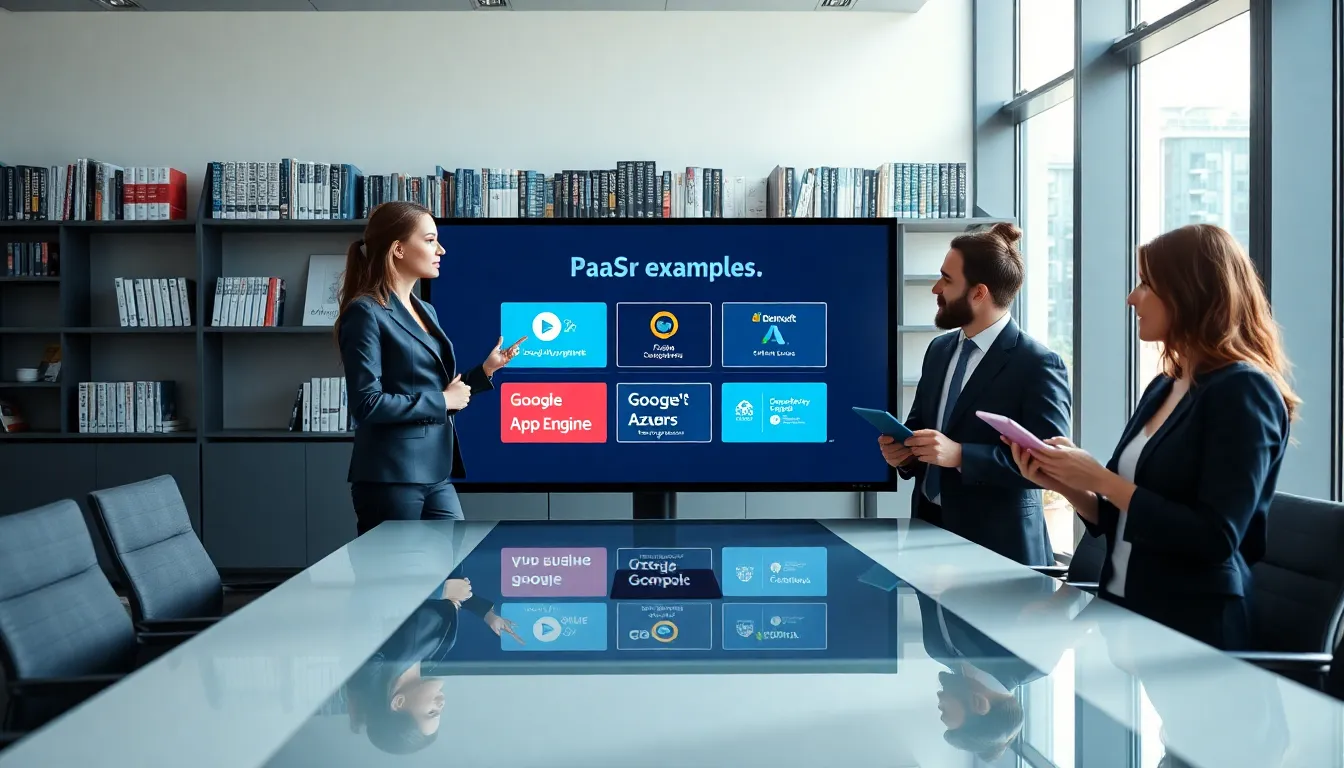In today’s cloud-driven world, businesses are racing to adopt Platform as a Service (PaaS) solutions faster than a cat chasing a laser pointer. But with great power comes great responsibility, and that’s where PaaS audits strut in like a superhero in a spandex suit. They ensure that everything from security to compliance is in tip-top shape, so organizations can focus on innovation instead of worrying about lurking risks.
Table of Contents
ToggleOverview of PaaS Audit
PaaS solutions are increasingly adopted by businesses seeking efficient cloud services. PaaS audits ensure that these platforms remain secure and compliant, supporting innovation without exposing organizations to risks.
Definition of PaaS
PaaS, or Platform as a Service, provides a cloud environment for developers to build, run, and manage applications. This service model removes the need for managing underlying infrastructure and allows teams to focus on coding and deployment. Users access a suite of tools that streamline app development processes, including middleware, database management, and development frameworks. Major providers like Google Cloud Platform, Microsoft Azure, and AWS offer robust PaaS solutions that cater to various business needs.
Importance of PaaS Audits
PaaS audits enhance security posture and ensure compliance with industry standards. Regular audits identify vulnerabilities in cloud environments, helping organizations mitigate risks. These evaluations assist in verifying adherence to regulations like GDPR and HIPAA, which may affect businesses operating in sensitive sectors. Additionally, audits provide insights into resource usage, optimizing costs and improving efficiency. Engaging third-party auditors can bring an unbiased perspective, ensuring that providers maintain effective security measures and reliable service delivery.
Key Components of PaaS Audit

PaaS audits encompass several critical components necessary for evaluating and enhancing cloud environments. These components focus on compliance, security, and performance.
Compliance Requirements
Adherence to regulations is crucial for cloud services. Organizations must ensure that their PaaS solutions comply with standards such as GDPR and HIPAA. Regular audits verify that data handling practices meet legal obligations. Monitoring compliance minimizes the risk of penalties associated with violations. Third-party auditors assist in evaluating documentation, processes, and controls related to compliance. Identification of gaps during audits allows organizations to strengthen compliance efforts effectively.
Security Measures
Robust security forms the backbone of PaaS audits. Evaluating security measures includes an assessment of encryption protocols, access controls, and incident response plans. Effective auditing identifies vulnerabilities that could expose sensitive data. Regular risk assessments ensure that security policies adapt to evolving threats. Organizations benefit from a layered security approach, combining physical, network, and application security components. Engaging external experts brings fresh perspectives to enhance the security posture of PaaS providers.
Performance Metrics
Measuring performance metrics incorporates aspects like uptime, response times, and resource usage. Audits analyze service level agreements (SLAs) to assess if performance expectations are met. Data analytics can reveal trends in resource consumption, aiding cost optimization efforts. Identifying bottlenecks in application performance enhances user experience and efficiency. Regular evaluations keep performance aligned with business objectives, ensuring that PaaS solutions consistently meet organizational demands.
Process of Conducting a PaaS Audit
The process of conducting a PaaS audit consists of careful planning, precise execution, and thorough reporting. Each phase contributes to enhancing security and compliance within the cloud environment.
Planning and Preparation
Effective planning lays the groundwork for a successful PaaS audit. Organizations should identify objectives and scope early in the process. Choosing the right auditors is critical, as their expertise directly impacts the audit’s success. Detailed document review focuses on existing compliance measures, previous audit results, and security policies. Gathering relevant data ensures a thorough understanding of the current PaaS environment. Timelines for each phase help in maintaining momentum throughout the audit. Allocating resources, including personnel and tools, supports an efficient workflow.
Execution of the Audit
During the execution phase, auditors assess the PaaS environment’s security and compliance measures. This phase includes direct examination of infrastructure and application configurations. Security protocols undergo scrutiny to identify any weaknesses or gaps. Interviews with key personnel reveal practical insights into operations and potential vulnerabilities. Regular communication with stakeholders keeps everyone informed about findings and progress. Utilizing standardized checklists helps streamline the evaluation process and ensures no critical areas are overlooked. Each identified issue receives documentation for further analysis.
Reporting and Follow-Up
The reporting phase synthesizes findings into a concise and actionable report. Clear, structured reports facilitate understanding across various stakeholders. Highlighting key issues, recommendations, and compliance status helps organizations prioritize improvements. Follow-up actions may involve developing remediation plans for identified vulnerabilities. Regular check-ins with stakeholders ensure accountability and track progress on addressing issues. Scheduling subsequent audits reinforces an organization’s commitment to maintaining a secure and compliant PaaS environment.
Best Practices for PaaS Audits
PaaS audits benefit from established best practices that enhance effectiveness and efficiency. Implementing these practices can significantly improve security and compliance for organizations.
Regular Audit Scheduling
Scheduling audits regularly fosters a proactive approach to compliance. Many organizations adopt quarterly or semi-annual audits for optimal results. Systematic timing helps identify vulnerabilities early and mitigates potential risks. Consistent audits ensure that organizations remain compliant with evolving regulations like GDPR and HIPAA. Teams benefit from developing a fixed calendar that aligns with internal reviews and external requirements. Each audit session should focus on targeted areas based on previous findings or emerging threats.
Involvement of Stakeholders
Engaging stakeholders strengthens the PaaS audit process. Key staff across departments should participate to provide comprehensive insights. Collaboration with IT specialists, compliance officers, and operational managers enhances the audit’s depth. Effective communication ensures everyone understands their responsibilities and the importance of security measures. Stakeholders can provide invaluable feedback on operational challenges and security protocols. Fostering a culture of accountability encourages participation and adherence to suggested practices.
Use of Automated Tools
Automating auditing processes improves efficiency and reduces human error. Numerous tools offer robust analytics and reporting capabilities tailored for PaaS environments. Utilizing automated solutions accelerates data collection and streamlines compliance checks. These tools often enable continuous monitoring of security configurations and performance metrics. Regular reports generated through automation help organizations stay informed about their security posture. Adopting automation ensures timely identification of issues, facilitating prompt corrective actions.
PaaS audits are essential for organizations navigating the complexities of cloud environments. By prioritizing security and compliance, businesses can innovate confidently while minimizing risks. Regular audits not only ensure adherence to industry standards but also provide valuable insights into resource optimization. Engaging third-party auditors enhances objectivity and reinforces trust in service delivery. As the cloud landscape evolves, maintaining a proactive audit schedule and leveraging best practices will empower organizations to safeguard their PaaS solutions effectively. Embracing these strategies positions businesses for success in a competitive digital world.




